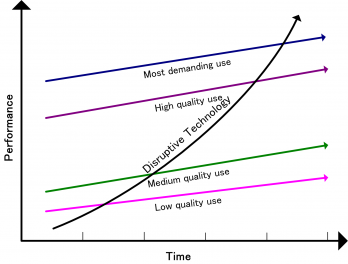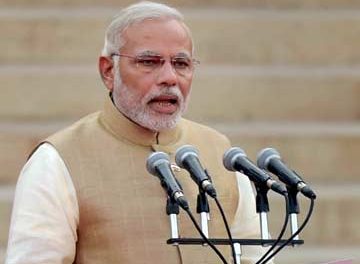 New York, NY – A few weeks ago when I was on a brief family visit to Manila, I had the chance to meet several of my high school class and school mates from San Sebastian College many years ago.
New York, NY – A few weeks ago when I was on a brief family visit to Manila, I had the chance to meet several of my high school class and school mates from San Sebastian College many years ago.
One of them had worked in Saudi Arabia as a petroleum engineer for some 35 years and had returned last year to settle back to his beautiful Quezon City home to enjoy his well-deserved retirement.
Like him – and millions of other Filipinos who have gone overseas to earn and save meaningful amounts of money including in currencies stronger than the peso – he expressed much satisfaction and happiness that his two grown-up children were pursuing rewarding careers overseas: one in Australia, and the other in Belgium.
Two others, still living at home, may follow suit, and look for work and fortunes overseas. There are those Filipinos who work and live abroad for many years, sometimes until retirement. There are also contract workers who work overseas for limited periods of time. Both are significant contributors to the Philippine economy.
As a matter of fact, Filipinos are, per World Bank data, the world’s largest per-capita remitters of money to their home countries after the Chinese and Indians, as we had pointed out in a previous column here.
Another school mate spoke about the tremendous money-making opportunities available all over Metro Manila investing in commercial and residential real estate. He spoke particularly with much excitement about large-profit, quick turnovers in what has been termed BRS – buy, renovate, sell. A great source for such types of opportunities, he pointed out, is bank-repossessed properties.
Oftentimes the person who returns home to retire, has enough money to not only live a very long, comfortable retirement, but also invest part of those saved funds to make money with the BRS technique. This does require experience to be done right.
Those funds are also often invested by retirees to create additional income from property rentals. Low-overhead, large net-income businesses that also increase in value are another attractive area of investment for those returning home to enjoy their retirement.
I also learned first-hand visiting the Shangri-La Plaza sales office of a high-rise property developer that market prices of apartments have risen considerably since my last Manila visit in December 2013.
What happens when saved earnings are invested back home? Many sectors of the Philippine economy besides the investors, benefit! Here are some benefits of investing overseas Filipinos’ earnings for the entire Philippine economy:
- Banks get more capital to lend to borrowers, creating job opportunities in banking
- Borrowers create new jobs in various sectors such as in construction, design, hospitality, leisure, manufacturing, retail, and tourism to name a few. All increase the size of the Philippines' gross domestic product.
- Consequently, more overseas Filipinos come to know of the high return on investment in a faster-growing as well as a larger Philippine economy. This creates a large multiplier effect, further spurring GDP growth in this country. We had pointed out in a previous column that the Philippines was now one of the world's 'Six Tigers' or fastest-growing economies with annual GDPs of at least $200 billion.
- Huge opportunities exist for the Philippines to increase earnings from exports of agricultural and seafood products. Investing in the export sector including finding new export markets can bring in new money from overseas, as well as raising the standards of living for millions of farmers and fishermen.
- The customer-support business is one area where the Philippines excels and is a leading player, with excellent language skills and naturally friendly attitudes of Filipino professionals in this area of work. Expansion of this sector can create jobs for millions of people, not to forget rapid development of housing and office infrastructure in Metro Manila, Cebu and other emerging urban areas.
- There are other economic sectors of the Philippine economy with good potential for growth, and it does not take much imagination to grow them. All that is needed is resourcefulness, proper planning and intelligent execution. Money is the key, and there is plentiful coming in constantly from overseas Filipino workers and those returning home to retire.
What can be done with business-government partnerships both on the national and on local levels, to foster such investments in the Philippines for everyone's benefit?
On a practical basis, a whole LOT can be done! Here are some of my suggestions:
- * Deregulate cumbersome requirements that delay the construction-permitting process, while ensuring utmost safety
- * Improve transportation infrastructure in Metro Manila to speed up the movement of people, goods and services
- * Grow promotion of foreign investments with clear, detailed information about the results other investors have derived
- * Improve the hospitality and tourism industries to boost them, with massive inflow of new money into the Philippines
- * Travel to countries where above efforts have already been undertaken with tremendous success: seeing is believing, learning, and doing!
Overseas Filipinos and those returning to retire in the Philippines invest in residential properties such as the one shown above and / or in commercial real estate properties such as the ones shown in this video below:
Kumar (Kem) Balani has an AB Journalism degree from the University of the Philippines and an MA in Politics from New York University. He is founder and publisher of Biz India Online News since 2002. Go to www.BizIndia.net to read book reviews, features, news, opinion columns, and videos on business, entertainment, investing, law, sports, technology, and more.
This column first appeared in the Daily Tribune in the Philippines on Sunday, Feb. 24, 2019. Read Kumar Balani’s columns in that newspaper: http://tribune.net.ph/index.php/author/kumar-balani/






